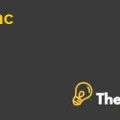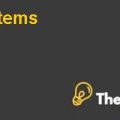
The co-operative bank Case Solution
Introduction
The co-operative bank marks its existence in 1872 in Manchester. It startedits operations as a department of co-operative wholesale society CWS. CWS is a central organization that is formed by the co-operative societies of the country, the dominating retailing force. Later on, the bank started providing services to the public.
After rapid growth, the bank became a separate legal entity and CWS becameits holding company. Lewis lee becomes its first chief executive. The company has changed and altered its policies and business significantly throughout its business cycle in order to remain competent in the market. For boosting its deposits the company introduced free banking for those who had higher deposit with the bank.
The company went through major restructuring and brought down several related services into centralized system in order to provide customers with real-time query as well as introducing new features for its services. New features include phone banking and online transaction system. The products range also widened with different categories offered for different class of account holders. Products like visa gold cards and visa affinity credit cards became popular among the customers.
Apart from this, co-operative bank is facing difficulties in maintaining its costs; and the ratio of cost-to-income is high, which is making the bank more sensitive to the competition in the market.
Problem statement
The co-operative bank’s managing director has initiated a plan to address and solve the issue of bank’s inefficiency to control its cost and improve its cost-profit ratio. The plan designed in a way to work through five strategic steps:
Overhead reduction
Product profitability
Customer profitability
Segment profitability
Reorganizing business processes
The project is named as SABRE. The bank is trying to implement a cost model known as ABC costing model to allocate its costs in a more efficient manner. There are differences among the senior management regarding the ABC model and its implementation. Some are unsure whether this will be sound decision while others are in opinion of other alternatives.
ACTIVITY-BASED COSTING
Activity based costing is cost management method. It is a method for the measurement of performance of activities and its cost as well as cost objects or cost driver. In this method, costs are allocated to each activity based on its use of the bank’s resources. The three main components of ABC costing are activity, driver and process. The overhead costs of the bank are allocated to each activity based on the cost driver of that activity and the use of the resources of that cost driver.................
This is just a sample partial case solution. Please place the order on the website to order your own originally done case solution.











